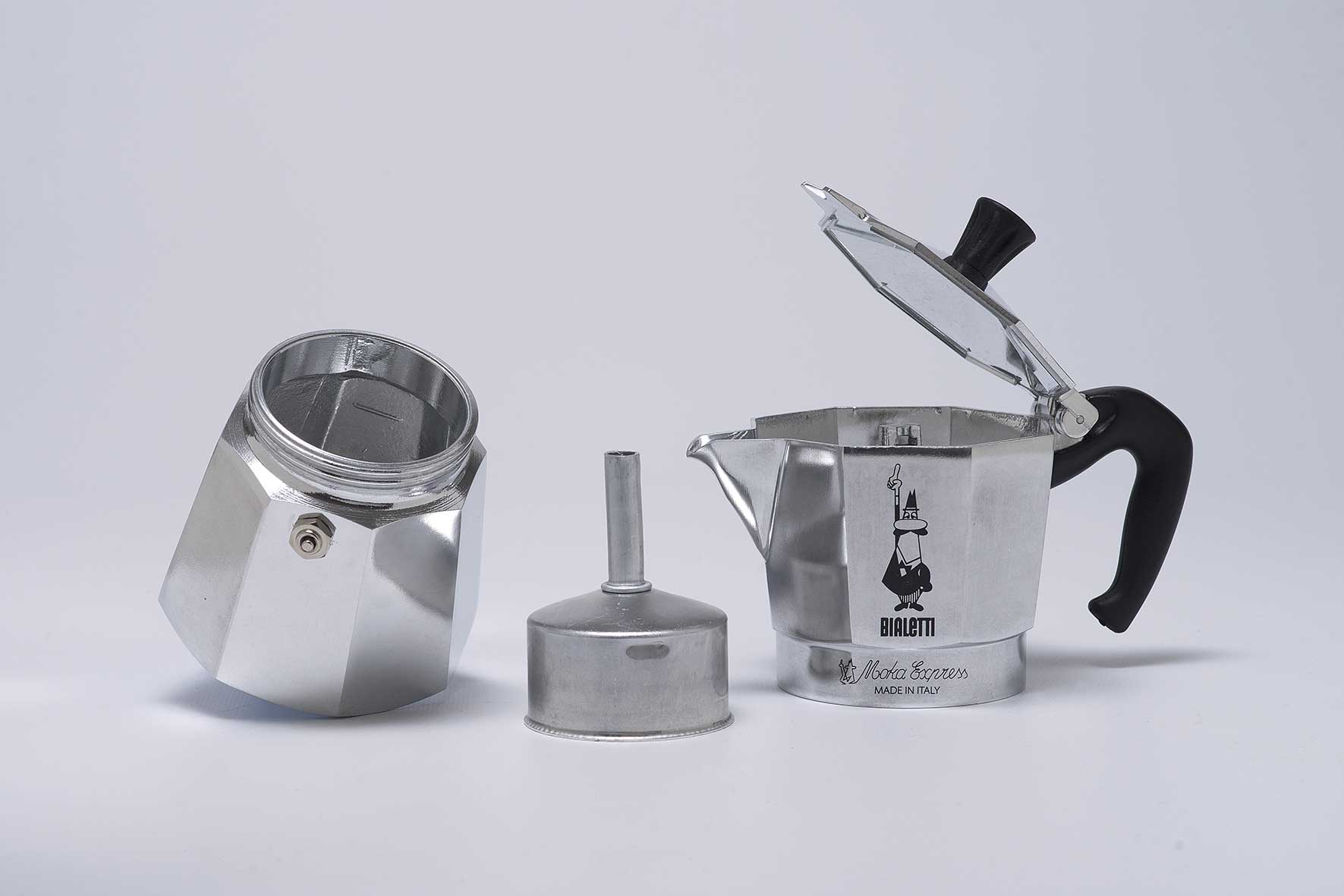Work: Moka
Design object

Original
- Space
- Design
- Designer
- Alfonso Bialetti
- Company
- Bialetti
- Date
- 1956
- Period
- 20th Century
- Production
- currently in production
- Dimensions
- 20 cm high, 17 cm wide, 10 cm deep
- Material
- aluminum, plastic, rubber
- Section
- cooking
- Awards
Photo: Maurizio Bolognini. Museo Tattile Statale Omero Archive.
Description
“We know more or less everything about the Bialetti moka: we know that it is an Italian invention, we know that, previously, coffee was made at home with a Neapolitan coffee pot or a press-filter coffee maker which both involved a much longer process and guaranteed a far more watered-down result.”
Moka is the aluminum coffee maker designed by Alfonso Bialetti in 1933 and perfected by his son Renato in 1956. It consists of two parts, joined vertically: the boiler and the jug. They are two basically octagonal shapes that are screwed together. The coffee maker is opened and closed by rotating the two parts using both hands. Inside the boiler there is a funnel-shaped filter, where the ground coffee is placed. It is surmounted by a flat one. A gasket is fitted between the two parts and there is a safety valve on the side.
The jug has a lid which is hinged to the handle attachment and there is a little column inside. As the water heats up, it increases the pressure inside the boiler and is forced up through the filter containing the ground coffee, and then through the column. Thus the coffee collects in the jug. The moka in our collection is the aluminium version for 3 cups, 20 centimetres high. It is produced by Bialetti in various colours and finishes. Electric versions with a timer are also available.
Not much is actually known about this object, “not even much is known about its name. For example, it is not widely known that it is partially incorrect to call Alfonso’s 1933 invention a moka, as he only called it a ‘little machine’ at the time. In fact, the name moka only arrived with Renato in the 1950s. To be precise, it is Moka with a capital M because Renato invented a proper name which went on to become the common name of that entire category of coffee makers (while the successful original would be simply known as the ‘Bialetti after its famous designer.” Chiara Alessi.
